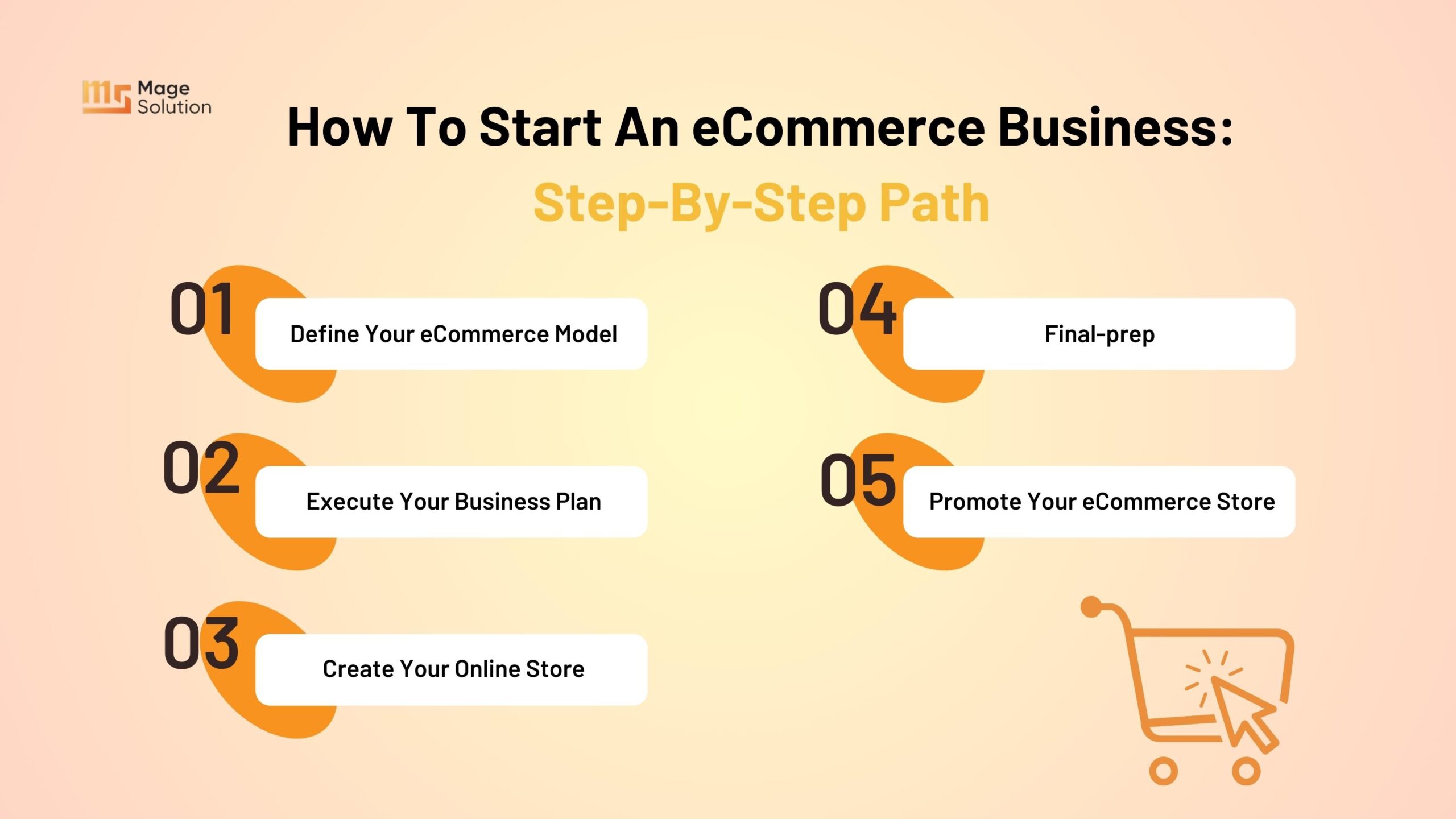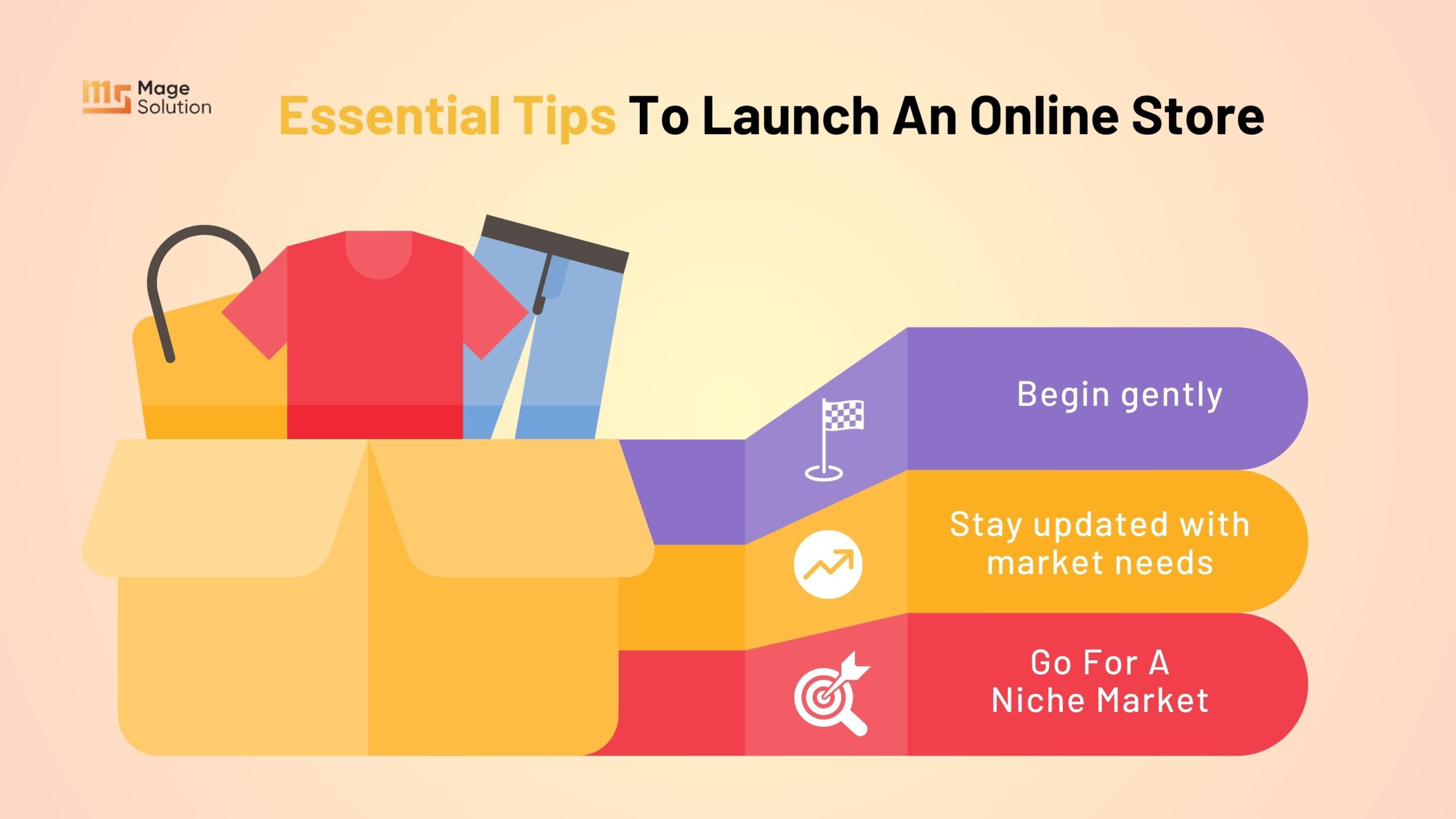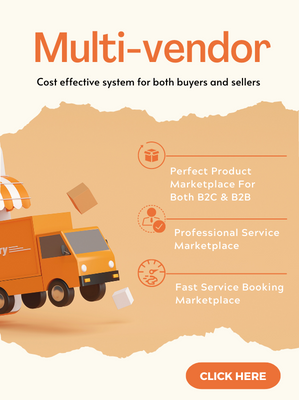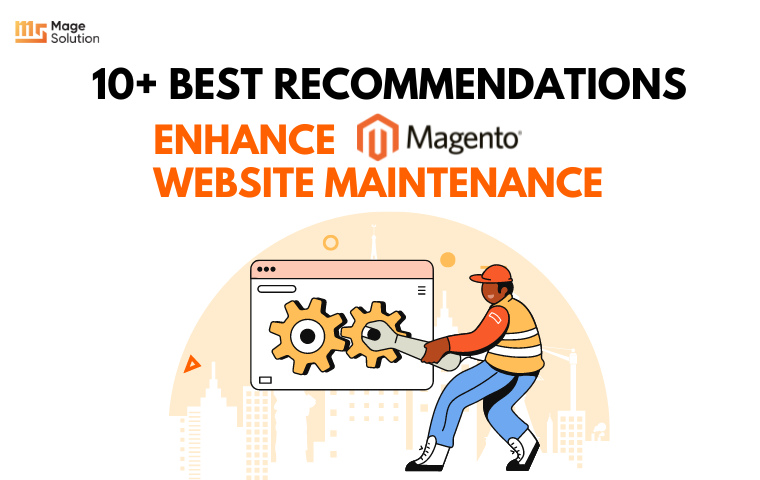
Introduction
The journey to building up your own business is such a challenging but thrilling alley. Especially during this digitalization space, implementing E-business is a must-step for sustainable growth. According to Forbes, the global subscription eCommerce market is expected to increase by 68% annually and reach $478 billion by 2025. This number has shown the interest of consumers towards online shopping, which is a huge benefit for every entrepreneur to push their store online.
Whether you’re still struggling with how to start an eCommerce business, the easiest way to compete directly with industry giants is to launch your E-store right away. Follow the step-by-step guide in this blog to delve into the ultimate process for beginners in creating an eCommerce website at minimized costs.
How To Start An eCommerce Business: Step-By-Step Path

E-commerce has been on a constant growth path over the past decade, peaking since the Covid-19 pandemic has somewhat increased online shopping habits. With the global market size expected to reach $8.09 trillion in 2025, this is probably both a challenge and a great opportunity for startups to reach out to the ocean. With many years of experience supporting SMEs and enterprises to build successful E-businesses, we have come up with this ultimate guide for entrepreneurs to follow in case you are still wondering how to start an eCommerce business.
1. Define Your eCommerce Model
The first step when deciding to do business on a digital platform like eCommerce, you need to distinguish the difference between traditional retail and online sales on the website. Don’t skip the extremely important research step to determine a long-term direction. Determining the needs of your business and the products you provide (physical goods or services, software, etc) will make a decision about the business model you want to apply. Let’s take a quick drive at the popular business models below:
B2C (Business-to-Customer)
This is a pretty popular business model for large-scale businesses when they directly sell consumer goods or services to end-users without going through any intermediaries. Usually, this format will be like a marketplace where you sell everything in one place, like Amazon or Walmart.
B2B (Business-to-Business)
This is a transaction model between two businesses to provide products and services with relatively large order quantities. It could be a sale between a manufacturer and a wholesaler, or a wholesaler and a retailer. In addition, this form will also include many steps as well as time to make a final decision.
C2C (Customer-to-Customer)
This model has also gradually become popular on eCommerce or marketplace platforms such as Shopee, Amazon, Lazada, etc, because of the diversity of products and the simplicity when small-scale businesses can create their own stores and sell online on these available platforms. Because store owners (formerly as consumers) only need an all-in-one venture to start an e-business easily.
C2B (Customer-to-Business)
In contrast to the B2C form, individuals will now sell products and services to businesses. Upwork is a typical example of freelance work by individuals for organizations and businesses.
Once you have determined the business model suitable for the products and items of your online store, the delivery factor is also a key step in how to start an online business.
Dropshipping
For new businesses, this is the most popular and convenient form of delivery, while avoiding inventory risks. When you partner with a manufacturer or supplier and let them ship goods to customers after a successful order on the website, you can save money on upfront investments.
D2C (Direct-to-Consumer)
When businesses want to improve customer experience with a separate shipping process, then the products will go directly to consumers, bypassing intermediaries. This option will also help businesses minimize the risk of negative feedback.
POS (Print on demand)
This type is suitable for retail businesses specializing in custom-made and easy-to-print products (Stationery, T-shirts, household items). Customers can freely customize the design on your eCommerce store, then POS service will directly deliver to the customer. This way is similar to Dropshipping because it saves money but will not have to ship goods from the supplier.
Wholesaling
With this business model, businesses will need to import large amounts of inventory, because the cost of buying wholesale from manufacturers will result in discounted import prices. You will then sell these products on the website at a higher cost to make a profit.
Subscription
Business form of periodic ordering to serve customers who need to use specific services and products. Items can be sent to customers on a monthly or weekly basis, such as pre-made meal sets, cooking ingredients, pet foods, etc.
White Label
To have full control over the quality of goods, you can import goods in bulk, then label the products according to your brand. This form will require a lot of initial costs to import goods and manage inventory.
2. Execute Your Business Plan
After determining the appropriate business model and method to import goods and do online business, the next important step is to implement a detailed business plan.
In this plan, you can create documents to attract potential investors, while also stating short-term and long-term strategies. In addition, research the market, competitors and business positioning in as much detail as possible to grasp general market opportunities as well as insights from target customers. Once you have clearly identified these items, you can define the next steps for future business promotion activities. Plan out your budget, logistics, and product management so you can confidently build your next roadmap for your eCommerce.
3. Create Your Online Store
Once you’ve already comprehended the market and outlined a business plan to navigate your E-business strategies, but you still don’t have enough in-house experts to deploy an online channel yourself? Hence, for the most crucial step, we’ll suggest the potential solution that thousands of eCommerce stores out there are utilizing in order to simplify how to start an eCommerce store!
Choose eCommerce Platform
Some popular eCommerce platforms with retailers and businesses globally include Shopify, Adobe Commerce (Magento Solution), BigCommerce, Wix, etc. Millions of store owners benefit from this solution since it provides advanced integration, inventory management features, order fulfillment, and the ability to establish a website at a small initial cost.
Well, don’t worry if you still have difficulties using the eCommerce platform to establish your e-store, another savior is the eCommerce development company, which is competent in the field. Their development teams will support your site to run smoothly, minimize downtime, and strengthen the shopping journey with various extensions at the same time.
You can refer to these articles to better choose your ideal eCommerce platform:
Shopify Plus vs Bigcommerce Enterprise: The detailed comparison guide
Magento vs Shopify: Which is the best platform for your business?
4. Final-prep
Choose Store Name
Consider carefully before giving your store a proper name. Since it’ll be the domain name of your website, it’s better not to adjust many times. A name that is not too long and can present the brand message and core values you want to convey will be ideal for long-term progress. Moreover, you must be sure that the chosen name does not overlap with another one and is unique enough for customers to keep you in their minds.
Build Brand Identity
After having an official name, bring life to your business’s online presence with a visual appeal storefront. Identification colors, logos or taglines will be elements that mark your brand and help you stand out from your competitors due to the consistency throughout. When you have a strong enough brand identity and complete brand guidelines, it will also be easier to build an eCommerce store on web builders platforms or outsource eCommerce website development services.
Register Your Business
To register your business, entrepreneurs need to choose the legal structure from a general partnership, LLC, corporation, or sole proprietorship to determine the legal and financial principles for online business activities. You can consult legal experts to get specific and correct guidance.
Get Your Employer Identification Number
The next phase is to register for an Employer Identification Number (EIN). The IRS website allows you to register for a tax code for your business for free. Finally, get a business license from the local agency to be fully prepared to open your store.
5. Promote Your eCommerce Store
After your eCommerce store officially goes live, start implementing a plan to promote the store through multi-channel selling strategies. To attract organic traffic to your store, consider an omnichannel approach that promotes your store via social media platforms as well as a marketplace. In addition, businesses can deploy influencer marketing or email campaigns to attract potential customers.
Marketing promotion tools are also integrated into the eCommerce platforms we mentioned above, which allow businesses to optimize SEO for product pages, automatically send emails when customers abandon carts, or set up ads campaigns. You can also track the performance of your website and campaigns within a dashboard to make data-driven adjustments.
Essential Tips To Launch An Online Store

Begin gently
As a newbie, the advice is to start slowly with your eCommerce store, the first time will be when you can experiment with your business plan and products. With a limited budget at an early stage, store owners can sell 1-2 core products that they are most confident about so they can evaluate and adjust from customer feedback. Gradually you can scale up your business with other eCommerce platforms.
Stay updated with market needs
Obviously, when businesses can develop their products well or have a seamless delivery process, business owners also need to identify contemporary market needs as well as changes in consumer habits. For instance, vegan, natural or sustainable products will be increasingly favored and supported by young consumers.
Go For A Niche Market
In the midst of a big sea of fish out there, it is very difficult for you to promote yourself and compete with big-scale and long-standing businesses in the market. Hence, try to find and narrow the scope of your target audience so that you can easily compete and serve them better. Being able to be a good seller for a specific customer base can help you stand out in that territory and make an initial profit.
Conclusion
Wrapping up, hopefully to answer the question “How to start an eCommerce business” at this time, business owners can understand each step to launch an e-store in the most effective and cost-effective way. You can absolutely get started right away with an eCommerce website platform using drag and drop, and if you find it difficult to get used to, another way to consider is to hire an eCommerce development company.
With over 15 years of experience in creating eCommerce sites for businesses of all sizes, we can advise on the optimal solution for business owners. Contact us to receive expert support.



